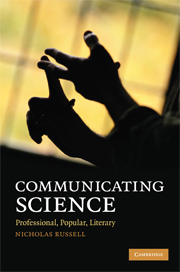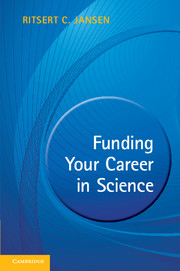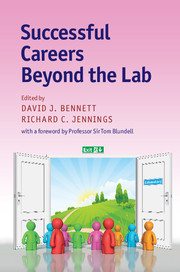Successful Science Communication
In the 25 years since the 'Bodmer Report' kick-started the public understanding of science movement, there has been something of a revolution in science communication. However, despite the ever-growing demands of the public, policy-makers and the media, many scientists still find it difficult to successfully explain and publicise their activities or to understand and respond to people's hopes and concerns about their work. Bringing together experienced and successful science communicators from across the academic, commercial and media worlds, this practical guide fills this gap to provide a one-stop resource covering science communication in its many different forms. The chapters provide vital background knowledge and inspiring ideas for how to deal with different situations and interest groups. Entertaining personal accounts of projects ranging from podcasts, to science festivals, to student-run societies give working examples of how scientists can engage with their audiences and demonstrate the key ingredients in successful science communication.
- Covers the whole spectrum of science communication activities, with authors from the academic, commercial and media worlds
- Practical, handbook style will suit researchers, students and other interested professionals looking for ideas and know-how
- An ideal resource for undergraduate and postgraduate courses, short courses, workshops and similar events
Reviews & endorsements
"Written in a practical, readable style and all well researched and well thought out, we are presented with history of scientific communication but also a handbook for those who could use a primer or those who are new to the communications game."
Edward Fenner, York University for DEMESCI- International Journal ofDeliberative Mechanisms in Science
"This book being a collection of writings by various authors is actually reassuringin that we are not listening to the opinion of one person or one group of people. In fact, it is eye-opening as to how opinions of scientists are fairly uniform (and actually improving!) across different cross-sections of society. This book is also a treasure trove of resources, references and links to data in the area of public understanding and appreciation of science and scientists. If you have been hesitating to talk about your science to non-science audiences take a look at this book for motivation, ideas and guidelines - at the very least we may recruit more bright, young minds to science instead of losing them to Wall Street!"
Vidhya Ramachandran, CWSP & COM Gazette
Product details
November 2011Adobe eBook Reader
9781139153768
0 pages
0kg
62 b/w illus.
This ISBN is for an eBook version which is distributed on our behalf by a third party.
Table of Contents
- Authors' biographies
- Foreword Sir Walter Bodmer
- Introduction: public engagement in an evolving science policy landscape Richard A. L. Jones
- Part I. What it Helps to Know Beforehand:
- 1. Deficits and dialogues: science communication and the public understanding of science in the UK Simon J. Lock
- 2. Explaining the world: communicating science through the ages James Hannam
- 3. Science, truth, and ethics Richard Jennings
- 4. The public's view of science George Gaskell, Sally Stares and Nicole Kronberger
- 5. The common language of research Tracey Brown
- 6. Not 100% sure? The 'public' understanding of risk John Adams
- 7. The ethos of science vs. ethics of science communication Alfred Nordmann
- Part II. Policy Makers, the Media and Public Interest Organisations:
- 8. Research and public communication in EU policy and practice Michel Claessens
- 9. Tackling the Climate Communication Challenge Andrew C. Revkin
- 10. Dealings with the media Stephen White
- 11. Dealings with the US media Chris Mooney
- 12. Relations with public interest organisations: consumers Sue Davies MBE
- 13. Relations with public interest organisations: patients and families Alastair Kent
- 14. Relations with environmental organisations: a very personal story Piet Schenkelaars
- Part III. What You Can Do and How To Do It:
- 15. Building relations with the various groups David J. Bennett
- 16. Finding the right words: how to shine in radio and television interviews Peter Evans
- 17. Nanotechnology and the media - front page or no story? Richard Hayhurst
- 18. The power of the podcast: the Naked Scientists' story Chris Smith
- 19. The social web in science communication Hayley Birch
- 20. Dealing with dilemmas and societal expectations: a company's response Lise Kingo and Susanne Stormer
- 21. Science festivals Nicola Buckley and Sue Hordijenko
- 22. Things to see and do: how scientific images work Rikke Schmidt Kjærgaard
- 23. The triple helix: the undergraduate student-run face of science communication James Shepherd
- 24. Public understanding of research: the Open Research Laboratory at the Deutsches Museum Paul Hix and Wolfgang M. Heckl
- 25. 'Imagine': a communication project putting life sciences in the spotlight Patricia Osseweijer and Tanja Klop
- Part IV. And Finally, Evaluating and Embedding Science Communication:
- 26. Evaluating success: how to find out what worked (and what didn't) Laura Grant
- 27. Effectively embedding corporate science communication in academia: a second paradigm shift? Maarten C. A. van der Sanden and Patricia Osseweijer
- Index.







